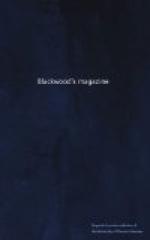to mechanical excellence, and indeed to all the minor
beauties of the art. We almost fear too much has
been done this way, because it has been too exclusively
pursued, and led astray the public taste to rest satisfied
with, and unadvisedly to require, the less important
perfections. From that great style which it may
be said it was the sole object of the Discourses to
recommend, we are further off than ever. Even
in portrait, there is far less of the historical, than
Sir Joshua himself introduced into that department—an
adoption which he has so ably defended by his arguments.
But nothing can be more unlike the true historical,
as defined in the precepts of art, than the modern
representation of national (in that sense, historical)
events. The precepts of the President have been
unread or disregarded by the patronized historical
painters of our day. It would seem to be thought
a greater achievement to identify on canvass the millinery
that is worn, than the characters of the wearers,
silk stockings, and satins, and faces, are all of
the same common aim of similitude; arrangement, attitude,
and peculiarly inanimate expression, display of finery,
with the actual robes, as generally announced in the
advertisement, render such pictures counterparts,
or perhaps inferior counterfeits to Mrs Jarley’s
wax-work. And, like the wax-work, they are paraded
from town to town, to show the people how much the
tailor and mantua-maker have to do in state affairs;
and that the greatest of empires is governed by very
ordinary-looking personages. Even the Venetian
painters, called by way of distinction the “Ornamental
School,” deemed it necessary to avoid prettinesses
and pettinesses, and by consummate skill in artistical
arrangement in composition, in chiaro-scuro and colour,
to give a certain greatness to the representations
of their national events. There is not, whatever
other faults they may have, this of poverty, in the
public pictures of Venice; they are at least of a magnificent
ambition: they are far removed from the littleness
of a show. We are utterly gone out of the way
of the first principles of art in our national historical
pictures. Yet was the great historical the whole
subject of the Discourses—it was to be
the only worthy aim of the student. If the advice
and precepts of Sir Joshua Reynolds have, then, been
so entirely disregarded, it may be asked what benefit
he has conferred upon the world by his Discourses.
We answer, great. He has shown what should be
the aim of art, and has therefore raised it in the
estimation of the cultivated. His works are part
of our standard literature; they are in the hands
of readers, of scholars; they materially help in the
formation of a taste by which literature is to be
judged and relished. Even those who never acquire
any very competent knowledge of, or love for pictures,
do acquire a respect for art, connect it with classical
poetry—the highest poetry, with Homer,
with the Greek drama, with all they have read of the




